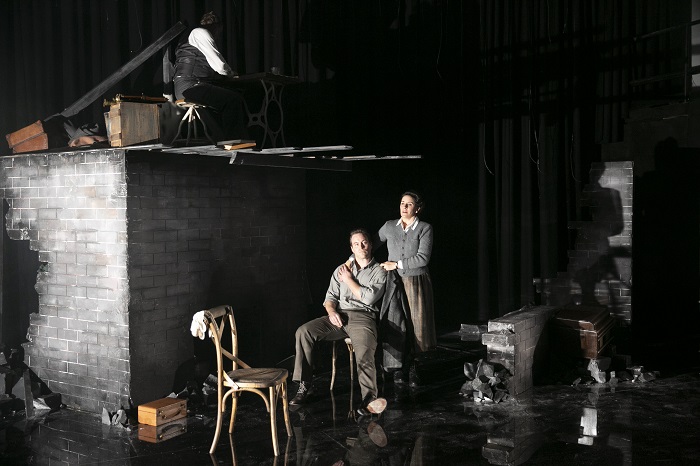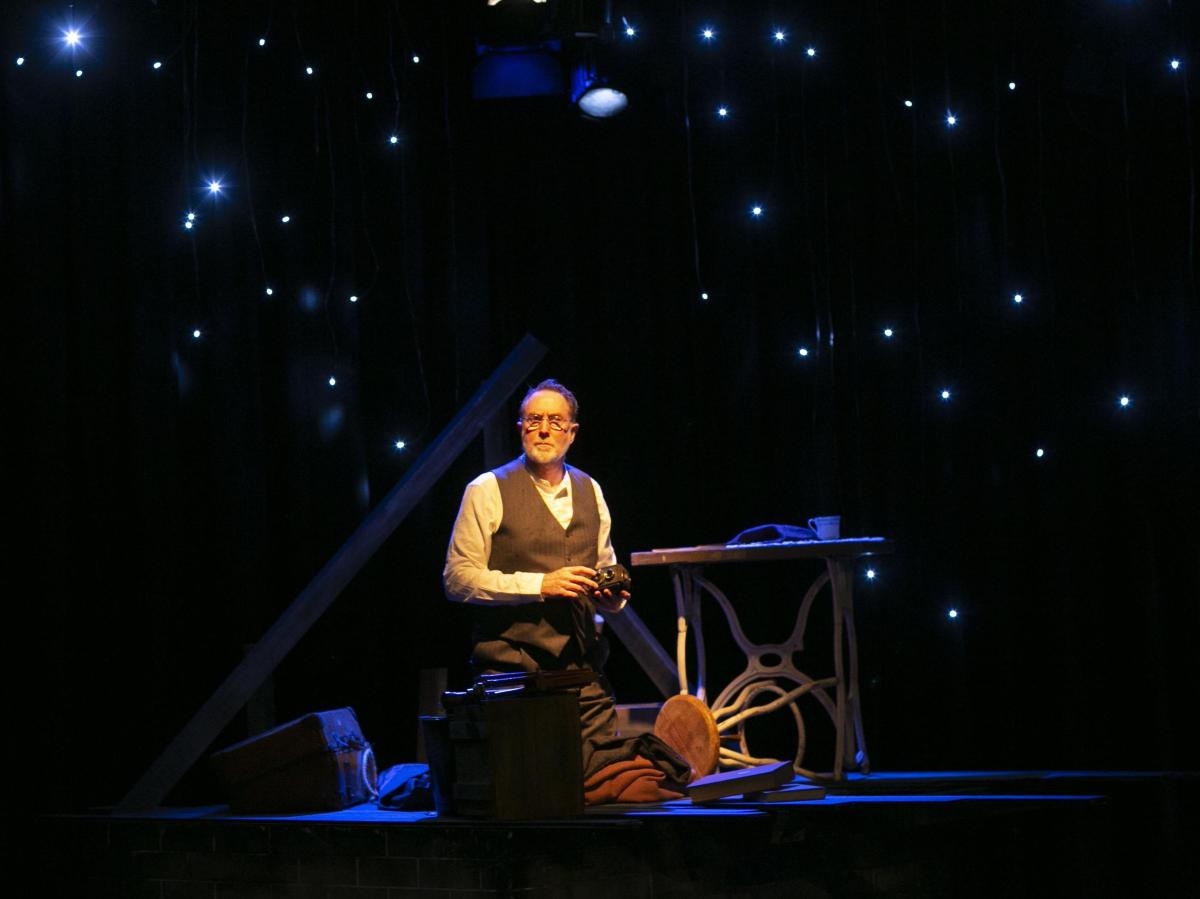Timothy Daly’s The Man in the Attic. Photo by Blumenthal Photography.
Timothy Daly’s The Man in the Attic is based on the incredible true story of a German couple who give refuge to a Jew (Barry French) during World War II. Hidden away in the attic, his skills as a watchmaker serve as payment for the kindness they are providing him. As the war draws to a close, and the fall of the Third Reich throws the non-Jewish population of Germany into economic instability, the Jew’s skills prove too valuable to lose, so the German couple maintain the illusion that it is not yet safe to come out. As lie begets lie, saviour becomes kidnapper and a cycle of violence unfolds whereby none are untainted by the systemic evil in which they are forced to reside in.
Unfolding in a single act over 90 minutes, The Man in the Attic is a slow burn, which is appropriate. In the first half, we feel the monotony of time for the Jew, locked away in a room where the only observable change are the movements of the constellations in the night sky. Disconnected from the world and with only blind faith sustaining him, a kind of Stockholm syndrome develops between him and the Wife (Danielle King), an obviously kind and empathetic woman who is both friend and captor to the Jew, and simultaneously oppressed subordinate/co-conspirator to her domineering husband. His gratitude provokes her guilt; she compensates for her guilt with more kindness, which prompts from him more gratitude. It would be funny if it weren’t all so sick, but this was the reality that everyone had to endure in this time. King has the most challenging and complex role to play, and she does that admirably. French as the Jew is wonderfully sympathetic, but does the power of his likability nullify the complexity of his character, in glossing over his own willingness to submit to his capture? If likability is a flaw, it’s ultimately not a bad flaw to have.

Timothy Daly’s The Man in the Attic. Photo by Blumenthal Photography.
Meanwhile, the wheelin’-and-dealin’ Husband (Gus Murray) is having an affair with the nosey Neighbour (Colleen Cook), who validates his greed with her own. If the Jew and the Wife are riddled with moral ambiguity, the Husband and the Neighbour are completely ethically devoid. Their ownership of their greed, selfishness and willingness to exploit others is so complete that they come across a little like cartoon villains. It seems strange to pair such a one-dimensional couple next to such well-rounded and nuanced lead couple that one struggles to see the logic behind the move. In addition, the casting of Cook as a woman much older than Murray was a little unconvincing – perhaps this pairing was an attempt to mirror the generational difference between the Jew and the Wife. If so, it’s still unconvincing to believe that such a superficial couple could overlook a barrier like an age gap when the only thing connecting them is mutual self-service.
The action plays out on Hugh O’Connor’s stunning set, whose grey monotone reflects the many shades of grey in the story’s morality. Despite being a shell of a building, it is filled with rubble and debris, a striking metaphor for the human condition. It works beautifully with Emma Lockhart-Wilson’s restrained lighting design which is the only element that gives us a sense of time passing throughout the play.
The Man in the Attic is a thoughtful play which does not propose any answers, only prompting more questions. In portraying an unthinkable act unfolding in a way which any reasonable person can understand and empathise with, we are forced to contemplate how complicit we are in our own captivity, and the subjugation of others. There are no right answers regarding this simply because the whole situation is wrong to begin with, and this ethos is every more relevant in today’s climate than ever.
Rating: 3 ½ stars ★★★☆
The Man In the Attic by Timothy Daly
Directed by Moria Blumenthal
Supported by Darlinghurst Theatre Company
5-22 July, 2018
Eternity Playhouse, Darlinghurst





